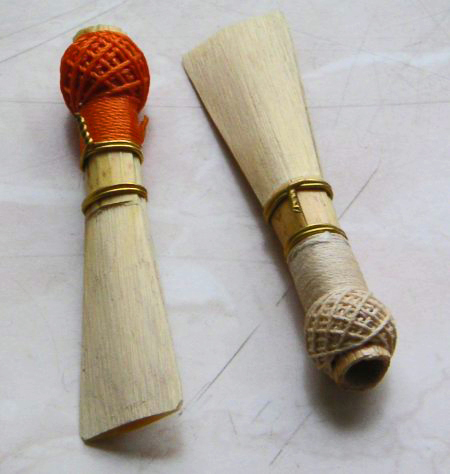|
Aeotana
The æotana is a small wind instrument made of seven Reed (instrument), reeds or metal strips fastened in a frame, played by blowing into it. Some African cultures make a similar instrument called a nanga (instrument), nanga, which is played during royal dances such as the Tshikona. See also *Jew's harp References Free reed aerophones {{FreeReed-instrument-stub ... [...More Info...] [...Related Items...] OR: [Wikipedia] [Google] [Baidu] |
Wind Instrument
A wind instrument is a musical instrument that contains some type of resonator (usually a tube) in which a column of air is set into vibration by the player blowing into (or over) a mouthpiece set at or near the end of the resonator. The pitch of the vibration is determined by the length of the tube and by manual modifications of the effective length of the vibrating column of air. In the case of some wind instruments, sound is produced by blowing through a reed; others require buzzing into a metal mouthpiece, while yet others require the player to blow into a hole at an edge, which splits the air column and creates the sound. Methods for obtaining different notes * Using different air columns for different tones, such as in the pan flute. These instruments can play several notes at once. * Changing the length of the vibrating air column by changing the length of the tube through engaging valves ''(see rotary valve, piston valve)'' which route the air through additional tubing, ... [...More Info...] [...Related Items...] OR: [Wikipedia] [Google] [Baidu] |
Reed (instrument)
A reed (or lamella) is a thin strip of material that vibrates to produce a sound on a musical instrument. Most woodwind instrument reeds are made from ''Arundo donax'' ("Giant cane") or synthetic material. Tuned reeds (as in harmonicas and accordions) are made of metal or synthetics. Musical instruments are classified according to the type and number of reeds. The earliest types of single-reed instruments used idioglottal reeds, where the vibrating reed is a tongue cut and shaped on the tube of cane. Much later, single-reed instruments started using heteroglottal reeds, where a reed is cut and separated from the tube of cane and attached to a mouthpiece of some sort. By contrast, in an uncapped double reed instrument (such as the oboe and bassoon), there is no mouthpiece; the two parts of the reed vibrate against one another. Single reeds Single reeds are used on the mouthpieces of clarinets and saxophones. The back of the reed is flat and is placed against the mouthpiece. These ... [...More Info...] [...Related Items...] OR: [Wikipedia] [Google] [Baidu] |
Nanga (instrument)
African harps, particularly arched or "bow" harps, are found in several Sub-Saharan African music traditions, particularly in the north-east. Used from early times in Africa, they resemble the form of harps in ancient Egypt with a vaulted body of wood, parchment faced, and a neck, perpendicular to the resonant face, on which the strings are wound. Ancient Egyptian harps The oldest depictions of harps without a forepillar can be seen adjacent to the Near East, in the wall paintings of ancient Egyptian tombs in the Nile Valley, which date from as early as 3000 BCE. These murals show an instrument that closely resembles the hunter's bow, without the pillar that we find in modern harps. The oldest depictions of harps in Africa date back to the 4th Dynasty of Egypt (around 2500 BC). They represent the already fully developed type of bowed harp with a short spade or shovel-shaped resonance box, which presumably dates back to the 1st dynasty (beginning of the 3rd millennium) ... [...More Info...] [...Related Items...] OR: [Wikipedia] [Google] [Baidu] |
Jew's Harp
The Jew's harp, also known as jaw harp, juice harp, or mouth harp, is a lamellophone instrument, consisting of a flexible metal or bamboo tongue or reed attached to a frame. Despite the colloquial name, the Jew's harp most likely originated in China, with the earliest known Jew's harps dating back 4,000 years ago from Shaanxi province. It has no relation to the Jewish people. Jew's harps may be categorized as idioglot or heteroglot (whether or not the frame and the tine are one piece); by the shape of the frame (rod or plaque); by the number of tines, and whether the tines are plucked, joint-tapped, or string-pulled. Characteristics The frame is held firmly against the performer's parted teeth or lips (depending on the type), using the mouth (plus the throat and lungs when breathing freely) as a resonator, greatly increasing the volume of the instrument. The teeth must be parted sufficiently for the reed to vibrate freely, and the fleshy parts of the mouth should not come into ... [...More Info...] [...Related Items...] OR: [Wikipedia] [Google] [Baidu] |



